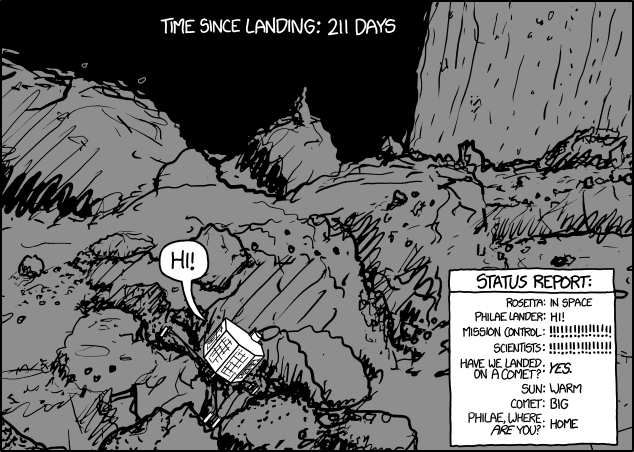For 85 seconds Philae “spoke” with its team on ground, via Rosetta, in the first contact since going into hibernation in November.
Source: Rosetta’s lander Philae wakes up from hibernation | Rosetta – ESA’s comet chaser
Now the scientists are waiting for the next contact. There are still more than 8000 data packets in Philae’s mass memory which will give the DLR team information on what happened to the lander in the past few days on Comet 67P/Churyumov-Gerasimenko.
Short recap: Philae is the craft that landed on the comet and Rosetta is circling about being the direct link to the lander kind of like how Apollo missions operated for manned moon landings. Both Philae and Rosetta travelled to the comet together and then 211 days ago Rosetta launched Philae onto the surface of the comet where it bounced funny landing next to a cliff that blocked sunlight to its solar panels. Apparently it now has gathered enough juice to be somewhat operational. This is quite an amazing feat involving every STEM discipline from mathematics to rocket science.
I wonder if they’ll reconsider shutting down this program as mentioned here.
xkcd has been all over this story from the landing; From: http://xkcd.com/1446/



